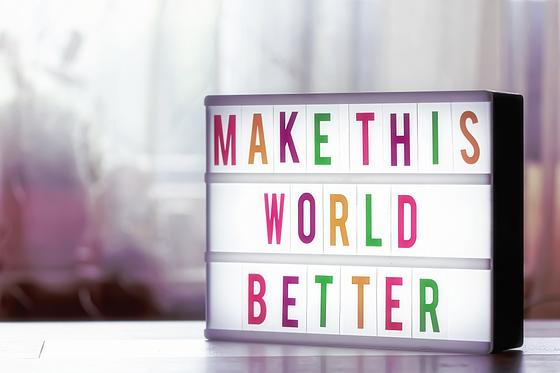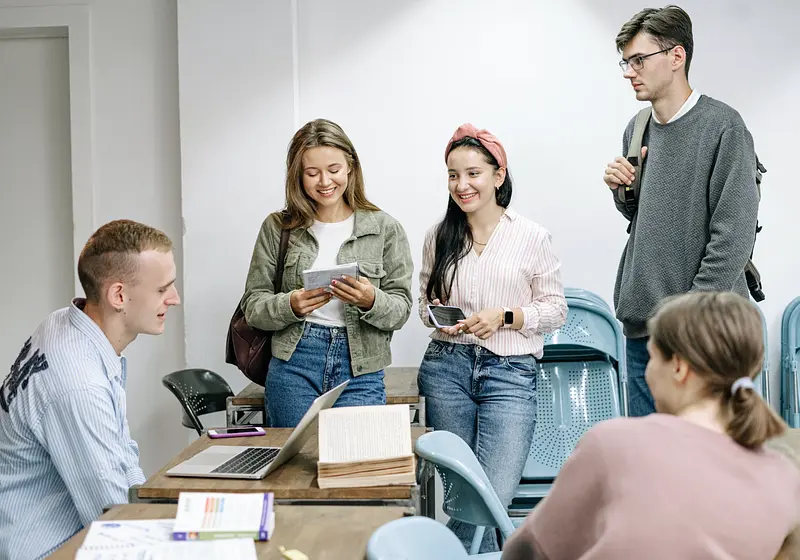The Breakfast Club. Ferris Bueller’s Day Off. Mean Girls.
The High School Musical franchise. All of these movies have become pop culture staples, largely because of their portrayal of the high school experience as a fictionalized time with just the right mix of teenage rebellion, romance, drama, adventure, and never-ending social hierarchies, feuds, and victories.
Due in large part to how high school and teen years have historically been represented in movies and TV shows for audience engagement, many young people have idealized expectations going into their high school career about who they will be, who they will meet, and what they will do.

Image Credit: greymatters from Pixabay
Everyone finds that they experience ups and downs when they are getting older and preparing to transition into adulthood, but it can be especially frustrating and disappointing for teens who feel that their high school environment is consistently a negative place where they feel excluded, isolated, stressed, uncomfortable, discouraged, or invisible - or they see their friends and peers grabbling with these realities in their own lives.
Whether you are in a situation like this or you know that there are opportunities for your high school campus (and the world at large) to change for the better in certain areas, keep reading for five practical ways that you can make your high school a more positive environment!
Let us slide into your dms 🥰
Get notified of top trending articles like this one every week! (we won't spam you)1. Student Government
If you aspire to create positivity from within the institutions of your school, then an elected position or role in student government may be a great fit for you. Launching a campaign, earning the support and trust of your peers, and representing the student body are all exciting challenges and opportunities for leadership development that many teenagers feel passionate about pursuing.
In student government roles, teens typically work under faculty advisors to plan and execute various campus events and dances, inspire a sense of school spirit and class pride, listen to suggestions from their peers, and assist with activities that are put on by their high school for the students and staff. The structure of each student government depends on the school, but there are usually the central roles of President, Vice President, Secretary, and Treasurer, positions for Presidents and Vice Presidents of each class (Freshmen, Sophomore, Junior, Senior), and then several Class Representatives for each grade as well.
Being involved in student government in any of these ways can allow you to speak up, share new ideas, collaborate with fellow student leaders, have discussions with staff members, and make a direct impact on your high school environment with support and funding from your own administration.

Image Credit: VBlock from Pixabay
Maybe you want to officially recognize and put on events for various awareness, history, and heritage months around the year, such as Hispanic Heritage in September, American Indian & Alaska Native Heritage in November, Black History in February, Women’s History in March, Autism Awareness in April, Asian American and Pacific Island Heritage and Mental Health Awareness in May, or Pride in June.
Maybe you want to create school-sanctioned programming and activities that promote kindness and inclusion and advocate against bullying and intolerance during October for National Bullying Prevention Month.
Maybe you want to find new ways to celebrate, support, and share gratitude for the teachers and faculty of your school community during Teacher’s Appreciation Week.
Maybe you want to invite a special guest speaker to your campus and hold an assembly in which students can learn from an alumni, local businessperson, regional government official, non-profit leader, or college admissions counselor.
Maybe you want your school to provide civic engagement resources for students, encourage political participation, and offer a holiday specifically for voting, like how Stanford undergraduate students worked to solidify Election Day as a holiday at their university.
Or, maybe you can add a new perspective to student council meetings and advocate for a more inclusive venue for prom, better uniforms for an athletics team, healthier food options at school, more effective recycling measures, accessible mental health resources, or even later start times of the school day.
Whatever positive change you feel called to advocate for, student government is a great option to make a difference while developing valuable leadership, time management, teamwork, communication, and self-confidence experience.

Image Credit: fauxels from Pexels
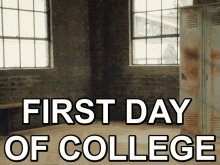
Take the Quiz: Which college major suits you?
Find out which college major aligns perfectly with your passions, strengths, and future dreams!
2. Contribute to a School Club, or Start Your Own!
If joining a group that is organized and led primarily by students seems more appealing than student government, then becoming a part of a school club can be an awesome way to help make your high school a more positive place. In many high schools, clubs can be focused on a wide variety of missions and activities - ranging from the silly and quirky to the more official and time-intensive.
Whether you find a group dedicated to Dungeons & Dragons, watching movies, learning a new language, or completing service projects, high school clubs in general are a great way to pursue your interests, find community, make friends, build a well-rounded skill set, and learn more about yourself and what you enjoy doing outside of academics.
If you want to join a club specifically to shift the culture and environment of your school (and broader local community) in a more equitable, diverse, kind, inclusive, sustainable, safe, and service-oriented direction, then looking for groups with missions aligned with those values would be a great place to start.
In my high school, we had clubs that spread words of kindness by leaving uplifting posters and sticky notes in hallways, classrooms, and bathrooms, clubs that wrote letters to local seniors and spent time with them, clubs that supported veterans by collecting donations and partnering with a local non-profit, and clubs that focused on environmental issues and worked with our honor societies to launch a school-wide donation of plastic water bottles that were turned in for money to buy and plant a tree on campus.
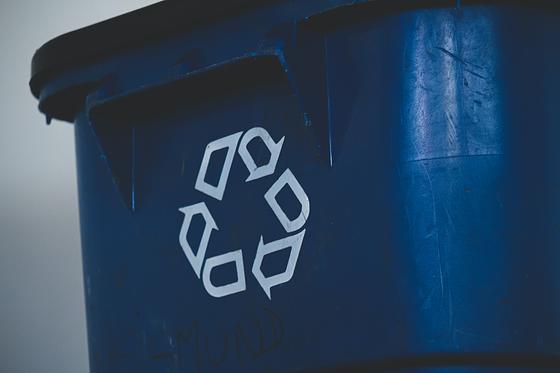
Image Credit: Sigmund from Unsplash
You can also look for affinity groups for students that belong to different heritage, ethnicity, gender, religious, LGBTQIA+, and other identity populations as these clubs may be involved in advocacy, community building, and outreach work that makes your school a more culturally vibrant and inclusive place to be.
There are also many national and international nonprofits that allow students to create and register chapters at their schools so they can serve in their local areas. For example, the Surfrider Foundation, NAACP, and Innocence Network all provide opportunities and resources for high school students to get involved through their own clubs and chapters.
Additionally, a College Vine article from Sadhvi Mathur provides a few more starting points and explains that high school students can also be involved in/create their own student groups for Amnesty International, Operation Smile, and Key Club International, which states that…
“High school student members of Key Club perform acts of service in their communities, such as cleaning up parks, collecting clothing and organizing food drives. They also learn leadership skills by running meetings, planning projects and holding elected leadership positions at the club, district and international levels.”
The article goes on to provide 30 ideas for clubs of all kinds (STEM, art, business, writing, politics, and more) that can be started by high schoolers interested in specific career paths and hobbies, so definitely check it out here!
Ultimately, whether community service, affinity, or non-profit related clubs already exist at your school or you want to be the one who leads the way and gets one started, they are all excellent avenues through which you can not only improve your high school, but also serve others and help improve the world at large.

Image Credit: NastyaSensei from Pexels
And even if you don’t participate in clubs that directly perform community service or work with a non-profit, remember that joining groups that allow you to participate in student journalism, create and display artwork, perform for other people as part of a band or other performing arts group, pick up trash on campus, show up and cheer at sports events, or tutor younger students are all ways that young people can make their high school a more positive, joyful, and enriched environment with their unique passions and skills.
Whether a group is focused on photography, chess, math, writing, reading, film, animals, or sports, it is meaningful and impactful to create and contribute to spaces that help students find community, belong to something bigger than themselves, spend their time in constructive ways, and de-stress from the pressures of their lives.
So, be creative and enjoy the process of finding ways to have fun and give back!
3. Champion Diversity & Inclusion
With the Supreme Court dismantling affirmative action in higher education, it is more essential than ever that Black, Indigenous, Hispanic, and all students of color are supported during their high school years, feel represented and included in spaces of learning, are encouraged and uplifted in their collegiate aspirations and trajectories, and have access to community/affinity spaces, college prep and career development resources, and information about different universities and admissions processes.
Whether your school has excellent systems in place to advance equity in education or only has a limited commitment to supporting its students of color, finding ways to champion diversity and inclusion as a student yourself is an amazing and important avenue to make your high school a more positive environment for everyone in your local community.
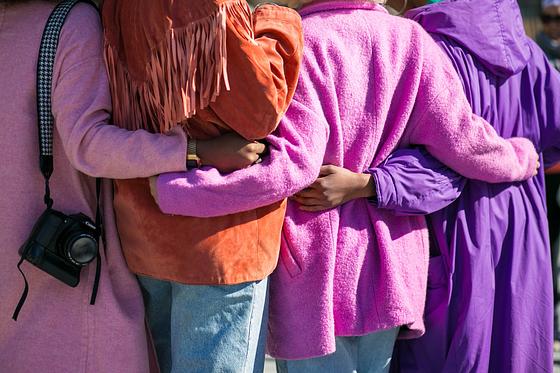
Image Credit: Vonecia Carswell from Unsplash
As we mentioned above, one step you can take is starting or supporting an affinity group at your high school for specific racial and ethnic populations, such as a Black Student Union, Mixed Race/Multicultural Student Organization, Native American/Indigenous/American Indian Cultural Center, or Hispanic/Latinx Student Union.
If you belong to any of these communities, student groups like these can coordinate various events to foster belonging and increase representation, carry out meaningful advocacy efforts for positive change in school policy, curriculum, or practice, and be spaces where students can find mentorship and support with high school, college, and beyond.
So, becoming involved with an affinity group that you identify with can be a great addition to your high school experience, inspiring you to join similar cultural organizations in college or adulthood, and bringing about benefits not only for your present and future goals, but for the environment and culture of diversity and inclusion at your school as a whole.
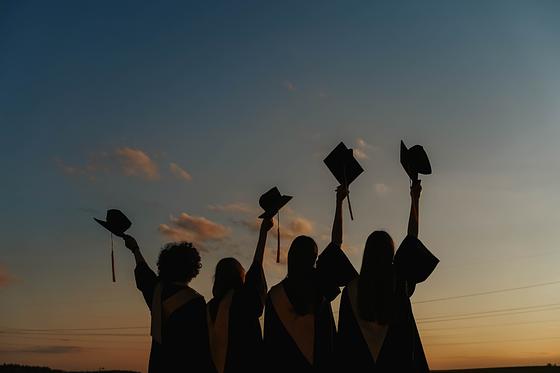
Image Credit: olia danilevich from Pexels
And, if you don’t belong to any of these communities and cultural groups, you can still take action to educate yourself on past and current historical/social issues, attend cultural events open to the entire student body, and respectfully ask your friends and peers how to be a great ally and best support them and their communities.
And for anyone looking to get involved with important causes and campaigns that can make a positive difference in diversity and inclusion for students all over the country (and world), you can also work with or support organizations that are fighting for change on a broader level. Whether it’s working to end the use of Native mascots, advocating for racial justice-oriented education reform, opposing discrimination and inequitable policies in schools, or empowering girls through education on an international scale, here are a few awesome organizations to follow, support, and learn more about:
-
-
Accessible Quality Education
-
Education Litigation
-
Free Our Schools
-
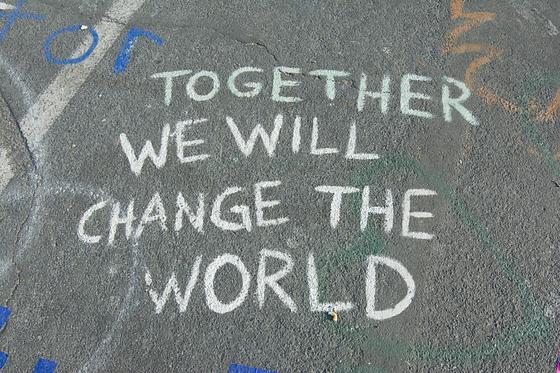
Image Credit: Priscilla Gyamfi from Unsplash
Of course, we can’t end this section about championing diversity and inclusion without making it clear that diversity doesn’t just apply to ethnicity and race - within the human experience, there is also a diversity of physical and mental abilities, gender identities, sexual orientations, religious beliefs, immigration and socioeconomic statuses, and other identities.
Therefore, another meaningful way to make your high school a more positive environment is to support and champion the inclusion, representation, and equality of students with disabilities, students of different faiths, LGBTQIA+ students, international or DACA students, low-income or first-generation college-bound students, and other peers from marginalized, underrepresented, and underserved communities.
As mentioned earlier, programs through student government, affinity groups, and clubs are excellent options for changing the environment and culture of a high school. And of course, partnering with, raising money to support, or creating chapters for nonprofits are also great ways to educate yourself, serve others, and uplift your peers. Here is a great list to get started:
-
National Disability Organizations and Resources from Stanford University
-
8 Best Charities That Help International Students Financially by Nonprofit Point
-
Collective Success Network Resources Page for First Generation College Students
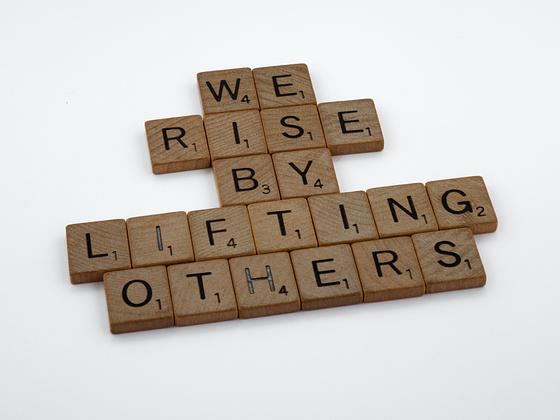
Image Credit: Brett Jordan from Pexels
4. Use Your Voice
“Langauge creates reality. Words have power. Speak always to create joy.”
We can utilize the vast opportunities within communication - writing, speaking, painting, drawing, and creating different forms of content - to share information, connect with other people, express our unique points of view, and advocate for changes in our own high schools and in places of education across the country.
Beginning with smaller scale opportunities, students can make posters or leave sticky-notes around their campus in the hallways, classrooms, or bathrooms to share words of positivity, love, and encouragement with their peers.
Giving thank-you notes to teachers and staff both inside and outside of Teacher’s Appreciation Week is also an uplifting and meaningful way for young people to use their voices to, as Chopra said, create joy and make their schools a more positive environment for everyone.
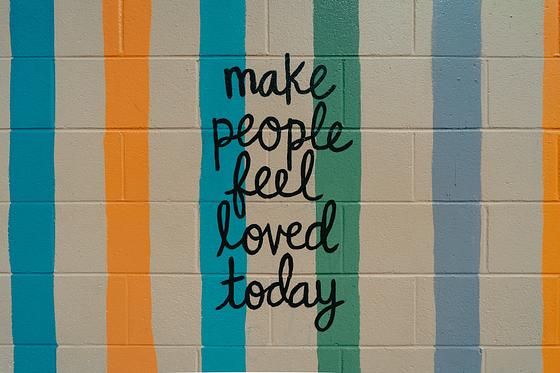
Image Credit: Clay Banks from Unsplash
These options can be done individually or with friends, or they can be coordinated and organized by school clubs that find guidance, inspiration, and support from national organizations dedicated to helping students and teachers foster kindness.
For example, The Golden Rule Project provides “Kindness Resources” that were compiled with kindness clubs in mind and include 320 ideas, including a kindness rock garden and sidewalk chalk art.
Additionally, Kindness Club International also has various initiatives in this domain, including support for people looking to start their own clubs, mural kits available for purchase, and ways to bring Founder Melinda Forward to schools for student leadership workshops, mural paintings, and more.
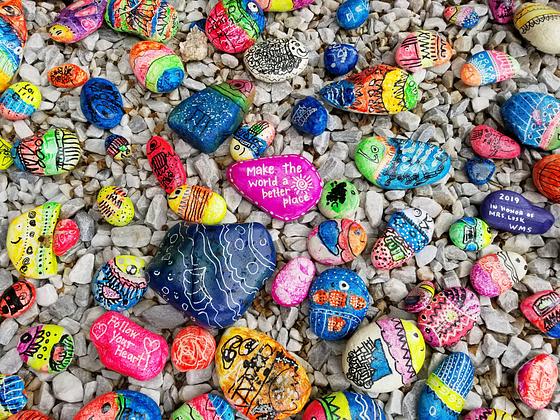
Image Credit: Simon Ray from Unsplash
Students can also use social media and other digital platforms to create blogs, podcasts, video series, music, and other forms of content that can communicate positive messages and educate people within their own schools and in broader audiences. Whether these productions are created through official school programs or as personal projects for students, they can be informative, comforting, affirming, impactful, and unifying for a school’s student body.
They can be focused on local issues and topics relevant to the young people of a certain school or town, or these productions can be a way for students to speak about far-reaching areas of concern that affect people at national and international levels.
For inspiration, the United Nations has a series called “Youth In Digital Activism,” which shines light on four individuals from around the world who are working for change and using the Internet and social media as key parts of their approach.
Also, this article from GoodGoodGood contains profiles of twenty youth activists who have taken action using social media, authorship, student clubs, non-profits, demonstrations, school walkouts, speeches, and letters and petitions to state officials, heads of government, and the United Nations.
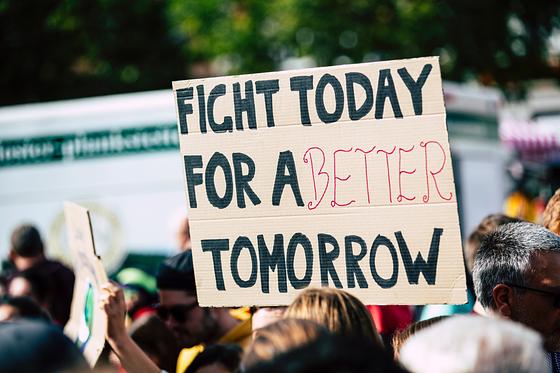
Image Credit: Markus Spiske from Pexels
But you don’t have to be a globally renowned youth changemaker to make a difference and use your voice to show support and solidarity for causes that you believe in.
You can send messages to government officials and U.S. departments through the ACLU’s “Take Action” page, which allows you to add your name to petitions and send digital messages about issues ranging from reproductive freedom and trans health care to protecting Native families, ending racist sentencing practices, and fighting for justice for people seeking asylum in the US.
And for students specifically looking to advocate for their safety and combat gun violence and mass shootings, there is educational information and several different petitions and opportunities to send messages to government officials on the March For Our Lives website. You can also learn more about the issue of gun safety and find additional petitions through the Sandy Hook Promise Action Fund.
Whether you are interested in societal and political issues or you just want to show love and appreciation to your teachers and make words of hope and encouragement visible on your campus, there are many avenues through which students can work together and use their voices to make their high schools, other schools, and our modern world a more positive environment.
As Martin Luther King Jr. said,
“Our lives begin to end the day we become silent about the things that matter.”
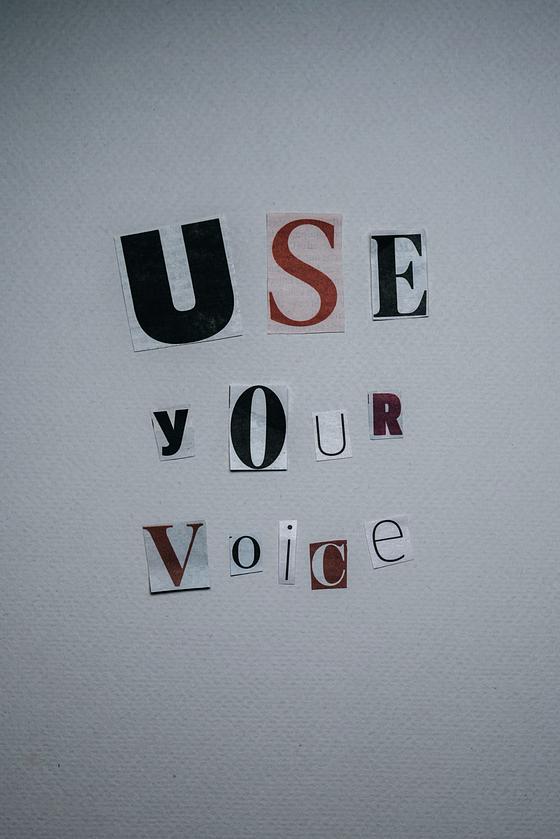
Image Credit: Polina Kovaleva from Pexels
5. Go Back to the Basics
This conversation has included a variety of opportunities for students ranging from clubs, nonprofit chapters, community service, petition signing, and content creation. But if all of that understandably seems overwhelming and too much to handle on top of everything else that a high school schedule entails, then this last tip is the perfect answer.
It’s straightforward, it’s flexible, it’s within each individual’s control.
It’s about going back to the basics and trying to be a good person who is conscious about acting with respect, decency, and concern towards other people.
.jpg)
Image Credit: John Cameron from Unsplash
Yes, positivity and progress can be created through official organizations and institutional initiatives, but all of that means so much less when the people involved don’t work at an individual level to value inclusion, equity, kindness, generosity, empathy, and thoughtfulness on a day-to-day basis.
Practically, it’s about being respectful to teachers and staff, doing small acts of kindness in the hallways or classrooms, having good intentions, speaking nicely to other people, modeling sportsmanship as an athlete, having integrity as a student, and generally treating others how you wish to be treated.
It may sound cliche, but as storyteller and speaker Joél Leon said,
“If we are asking for the world to be kind, we must first ask what are we doing to add more kindness to the world. If we are asking for the world to be more loving, we must first ask what are we doing to add more love to the world. We are the vessels for the things we seek.”
Furthermore, Morgan Freeman asks, “How do we change the world? One random act of kindness at a time.”
And Taylor Swift even said, “Being good to people is a wonderful legacy to leave behind.”
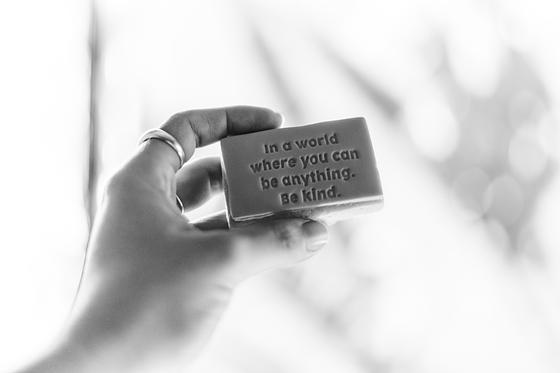
Image Credit: Kelli McClintock from Unsplash
Closing
A “positive environment” is a very general term that can mean a lot of different things and resonate uniquely to the diverse readers of this article.
Maybe it means that your school helps prepare students for adult life, college, the workforce, and civic engagement, that your school fosters a culture in which students care both about each other and their own health and well-being, that your school is environmentally conscious and responsible, that your school recognizes student voices and ideas, or that your school celebrates and supports a diversity of perspectives, identities, backgrounds, physical and mental abilities, and future interests - whether it’s STEM, the arts and humanities, or trades in the workforce.
Positive can simply mean that your school environment is one in which you and the people around you feel supported, seen, and safe to learn, to ask questions, to spend time with friends, to make connections with teachers and mentors, to pursue their passions, and to prepare for whatever comes next after graduation.
Whatever a positive school environment looks like to you, I hope these tips are helpful and get you thinking about how you can take steps to leave a mark on your community for the better. And just because your high school years may not stack up to the movies, that doesn’t mean they can’t be full of amazing memories, relationships, experiences, and changes - and you can be the one to create those things in your life today.
As Barack Obama said,
“Change will not come if we wait for some other person or some other time. We are the ones we've been waiting for. We are the change that we seek.”
